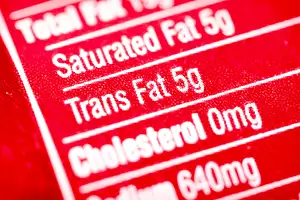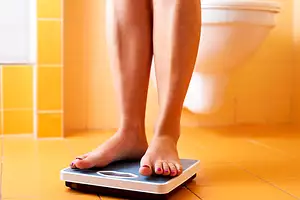Physical therapists often have just the right expertise and experience to help reduce your pain without medication.
Here are the top 8 tips that are typically recommended by physical therapists that can help you start feeling better right away.
1. They find the root cause of the pain.
Pain in one area can be coming from a problem in an entirely different area of the body. Physical therapists are trained to figure out the root cause, and then treat that cause, often improving the pain. Adrian Miranda, a physical therapist and the director of clinical residency education at Touro College in New York City, explained that certain problems, like tight calves, can be the cause of heel pain. Problems with hip flexibility can lead to knee pain.
It is important to know the root cause of the pain for proper treatment. Miranda states, “Take headaches: A lot of times headaches can come from muscle ‘knots’ known as trigger points, which can be found in your neck or head. If you have a headache, move your neck forward and back, bring your ear down to your shoulder, and turn your head left and right. Find the direction that seems tight and stretch into it. Many times we forget to move gently when we’re in pain, and this begins the process of tightness, which leads to pain if left untreated.”
2. Check out your desk.
If you have nagging neck pain that seems to go away on the weekends, you may have problems with your posture while sitting at your desk. Danielle Weis, a physical therapist in New York City, stated, “Many people develop acute and chronic low back and neck pain due to poor habits performed throughout the day, and all too often, the culprit is bad posture while sitting at work.”
Make sure your desk is set up in an ergonomically friendly way. This means that your computer and keyboard should be on the desk in front of you, with the top of the computer screen lined up with your line of vision. Your elbows should be at a 90-degree angle when typing. Your hips and knees should both be bent approximately 90 degrees. Keep your feet resting comfortably on the floor and avoid crossing your legs.
3. Bite down on your tongue.
This doesn’t actually mean hold your opinions in, it means literally “bite your tongue.” Zoe Fackelman, a PT in Canandaigua, NY, explains that one way to help ease musculoskeletal pain is to stick out your tongue, relax it and gently bite down on it. While you are doing this, use your thumb to make an irregularly-patterned tapping movement on the soft spot under your chin. This action is based on the Primal Reflex Release Technique (PRRT).
Fackelman stated, “PRRT is based on the premise that over-stimulation of the body’s primal reflexes creates pain and keeps painful patterns occurring long after the triggering event has passed. This technique works because it creates muscle confusion and relaxes the jaw muscles, which tighten when we’re in pain.”
4. Get enough sleep.
When you get enough sleep each night, your body is better prepared to fight inflammation, which is a huge contributor to pain. Josh Sandell, a sports medicine specialist in Minneapolis, stated, “Research shows that people who get less than six hours of sleep a night—or those who have disrupted sleep—have higher levels of C-reactive protein in the body, which is linked to inflammation.”
5. Don’t push through the pain.
When you have a new injury, or even a nagging injury, you may get the advice to do yoga to help stretch it out. Jacon C. Chun, a board certified sports clinical specialist in Fremont, California, states, “When pain first hits, what you really need is rest. And if your symptoms don’t clear up in a few days with rest and modifications in your activities, it’s time for a professional evaluation.” Simply beginning to foam roll or stretch may make matters worse.
6. Soak in a salty tub.
Soaking in a tub of Epsom salts can be very soothing and relaxing. Cathleen Bender, PT, a physical therapist at Cancer Treatment Centres of America at Midwestern Regional Medical Centre, recommends adding 2 cups of Epsom salts, 1 cup of baking soda, and 1/3 cup hydrogen peroxide to your hot bath. It can help relieve joint and muscle pain, and be very comforting.
7. Become more active.
When you feel stiff, it is natural to try and immobilize the area to prevent further pain. But, although this is a good idea when an injury first occurs, remaining inactive can have negative effects.
Chun stated, “Inactivity leads to muscles getting short and tight, and joints get locked up and become stiff. Moving helps lubricate joints, stimulates circulation, and keeps muscles mobile and strong. If you’re too uncomfortable to do mild exercise, you might try getting in a pool.” Chun explains that this can help reduce the pressure of gravity and help you be active with less pain.
8. Eat anti-inflammatory foods.
The foods that you eat can affect how much pain you feel. Certain foods promote inflammation, while others can help with reducing it. Avoid processed foods, red meats, sweets, and refined grains for best results. Try to add more vegetables, fish, cherries, blueberries, blackberries, and pomegranates.
When you are in pain, it is important to see your doctor to rule out serious causes, but remember that your physical therapist may have some great ideas when it comes to helpful treatments.










Comments